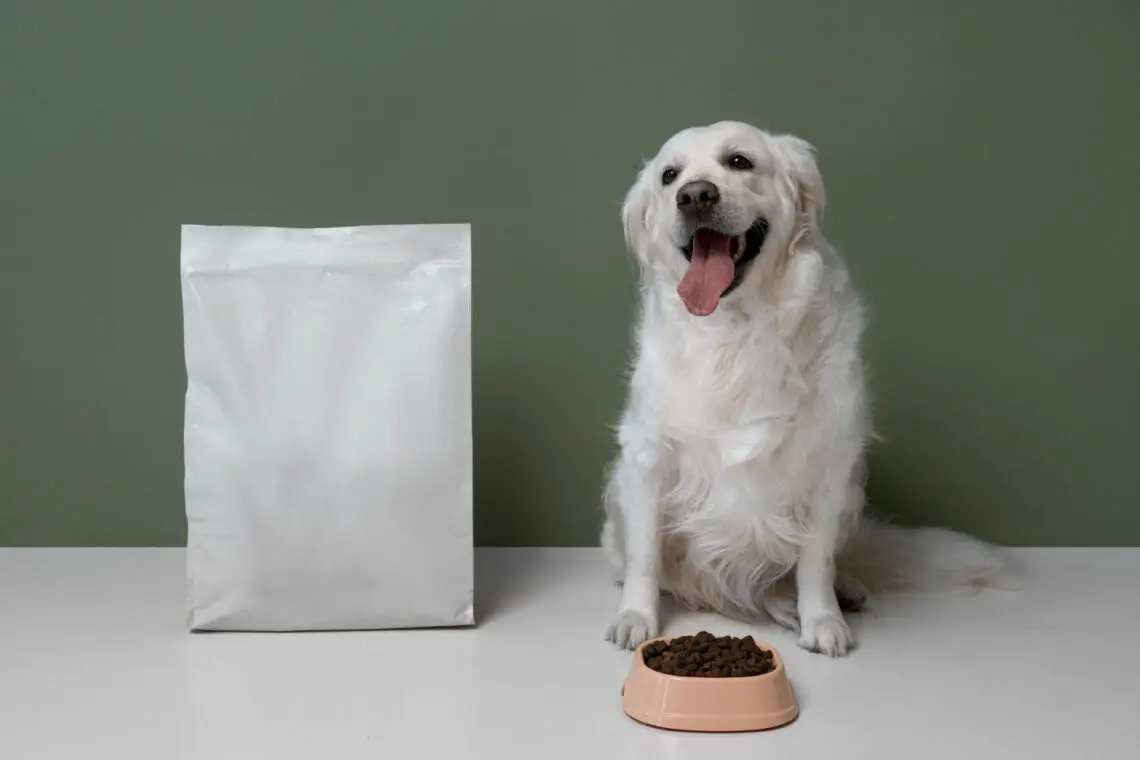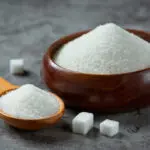The $42 Billion Food Waste Solution
Before we dive into label tricks, you need to understand what pet food really is from an industry perspective.
Pet food companies are primarily waste management businesses.
The global food waste management market in the United States was valued at $30 billion in 2016 and projected to reach $42.37 billion by 2022. Most major pet food companies are owned by agribusiness conglomerates who saw an opportunity: turn discarded food components—spoiled grains, beverage industry waste, and slaughterhouse offal (literally defined as “refuse,” “rubbish,” and “garbage”)—into profit.
When you buy that premium bag of kibble, you’re not buying food. You’re buying processed waste products marketed as nutrition.
The “Before Rendering” Deception
This is the most important trick to understand, and it’s completely legal.
How It Works:
Companies list ingredients by weight before processing, not by what’s actually in the final product.
Example: A popular “chicken-first” food lists:
- Fresh chicken meat (13%)
- Ground whole grain corn
- Ground whole grain sorghum
- Chicken by-product meal
Looks meat-heavy, right? Here’s what actually happens:
Fresh chicken meat: 70% water, 18% protein, 5% fat After rendering (removing water): Becomes roughly 3% of the final product
Corn and sorghum: Start lower on the list but lose minimal weight during processing After rendering: Now comprise the majority of the food
The reality: This “chicken-first” food is actually a corn and grain-based product with chicken flavoring.
Why This Matters:
Water weight affects protein sources more than any other ingredient. Companies exploit this legal loophole to make plant-based foods appear animal-protein heavy.
The Ingredient Splitting Scam
This technique breaks single ingredients into multiple smaller components so they appear lower on the ingredient list.
Real Example Analysis:
Premium Brand claiming “Biologically Appropriate”:
- Fresh chicken meat (13%), fresh turkey meat (7%), fresh whole eggs (7%)…
- Then: whole red lentils, whole green lentils, whole green peas, lentil fiber, whole chickpeas, whole yellow peas, whole pinto beans, whole navy beans…
The trick: If you combined all the legumes (lentils, peas, beans), they would likely be the #1 ingredient. By splitting them into separate listings, each appears smaller than the meat sources.
The reality: This “biologically appropriate” food is primarily legume-based—a plant that may cause heart problems (DCM) in dogs.
The “Real Meat” Illusion
Let’s examine what companies can legally call “meat”:
According to regulations, “real meat” includes:
- Muscle tissue
- Organs
- Skin
- Bones
- Connective tissue
- Fat
What it excludes:
- Added blood, bone meal
- Claws, hair, horns, hide
- Feathers, teeth, hooves
- Intestinal contents
The problem: Most canned foods start with “low-grade meat trimmings that are reconstituted into pieces that look like chunks of meat.” Those appetizing chunks are often created by:
- Suspending meat particles in gels
- Heating them until they coagulate into chunks
- Using extruded vegetable protein to simulate meat
Source: Marion Nestle and Malden Nesheim, Feed Your Pet Right
Deceptive Graphics: Perfectly Legal
Regulations state that graphics shouldn’t “misrepresent the contents,” but this rule has no teeth.
What you see on packages:
- Beautiful salmon fillets
- Prime chicken breasts on beds of vegetables
- Fresh carrots and sweet potatoes
- Cornucopias of colorful fruits
What’s actually inside:
- Rendered meat meals (dried powders)
- Split grains and industrial waste fiber
- Synthetic vitamins and minerals
- Flavor enhancers to mask the taste
The loophole: Regulations prevent undue emphasis on minor ingredients through words, not graphics. So companies can show a prominent apple on the package even if apple pomace (waste from juice processing) comprises less than 1% of the food.
Marketing Terms That Mean Nothing
These words have no legal definition in pet food:
- “Premium” / “Super Premium”
- “Holistic”
- “Gourmet”
- “Fresh”
- “Natural” (with exceptions)
- “Human Grade”
The “Natural” Scam
While “natural” does have some definition, companies exploit loopholes:
“Natural” can include:
- Animals raised with artificial hormones
- Genetically modified ingredients (GMOs)
- “Natural chicken flavor” from rancid restaurant grease
“Natural with added vitamins” – This disclaimer allows companies to use the natural label while including synthetic additives, as long as the disclaimer appears in the same size text.
Real Brand Analysis: How Deception Works
Example 1: “Chicken & Rice” Formula
Marketing image: Whole chicken with rice Ingredient reality:
- Lamb (source of glucosamine) – Note: Called “chicken” but starts with lamb
- Rice flour, whole grain corn, whole grain wheat – Three grain sources before any meat meal
- Chicken by-product meal – Finally, actual protein source
- Corn gluten meal, soybean meal – More plant proteins
Result: A grain and plant-based food with meat flavoring.
Example 2: “Premium” Veterinary Formula
Marketing: “Chicken meal” as first ingredient Ingredient reality:
- Chicken Meal, Whole Grain Wheat, Brewers Rice, Whole Grain Sorghum, Cracked Pearled Barley, Brown Rice, Soybean Meal…
Analysis: After the first ingredient, this is primarily grain-based with soy protein.
The Categories Trick
Regulations allow companies to group ingredients under broad categories instead of listing specific items:
Instead of listing specific grains, they can use:
- “Cereals” (could be anything: wheat, corn, rice, oats)
- “Meat and animal derivatives” (could be any animal parts)
- “Vegetable protein extracts” (highly processed plant proteins)
- “Oils and fats” (could be rancid restaurant grease)
This allows companies to hide exactly what’s in the food.
Why Premium Prices Don’t Equal Quality
Higher price ≠ Better ingredients
Premium brands often use the same ingredient deceptions as budget brands, just with better marketing. A $80 bag of “holistic” kibble may contain the same basic formula as a $20 bag, with minor additions to justify the price.
The profit margins are enormous when you’re selling processed waste products at premium prices.
How to Actually Read a Pet Food Label
Step 1: Ignore the Marketing
- Don’t trust graphics, colors, or descriptive words
- Ignore terms like “premium,” “natural,” or “holistic”
- Focus only on the ingredient list
Step 2: Combine Like Ingredients
- Add up all grain sources (corn, wheat, rice, etc.)
- Combine all legumes (peas, lentils, beans)
- Group all plant proteins together
Step 3: Consider Water Weight
- Fresh meat sources will drop significantly after processing
- Meals and rendered products maintain their position
- Plant ingredients lose minimal weight
Step 4: Look for Red Flags
- Multiple grain/legume sources (ingredient splitting)
- Meat “meals” instead of fresh meat
- Generic categories instead of specific ingredients
- Long lists of synthetic vitamins (suggesting poor base nutrition)
The Bottom Line
Pet food companies are legally allowed to deceive you. The regulations are written to benefit manufacturers, not pet parents. What appears to be a meat-based food is often primarily grains and legumes with meat flavoring.
Remember: You’re not buying pet food—you’re buying processed food waste marketed as nutrition. The beautiful pictures and meaningless marketing terms are designed to exploit your love for your pet while maximizing corporate profits.
In our next article, we’ll explore why pets are sicker than ever before, and how this processed food industry connects to the chronic disease epidemic affecting our companions.
Key Takeaways:
✓ Ingredients are listed by weight BEFORE processing, not after
✓ “Fresh chicken” becomes ~3% of final product after water removal
✓ Ingredient splitting hides the true main ingredients
✓ “Premium” and “natural” are meaningless marketing terms
✓ Graphics can legally misrepresent contents
✓ Pet food is primarily a food waste management business
✓ Higher prices don’t guarantee better ingredients
Reading Labels Like a Pro:
- Ignore all marketing language and graphics
- Combine similar plant ingredients to see their true ranking
- Account for water weight in fresh meat sources
- Look for ingredient splitting techniques
- Question everything – if it sounds too good to be true, it probably is
Next in this series: “Why Pets Are Sicker Than Ever: The Modern Pet Health Crisis Explained”





